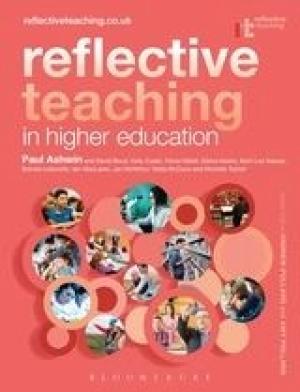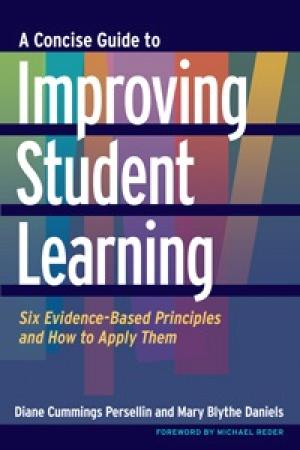Resources by Gordon S. Mikoski

A group of English, Scottish, Irish, and Australian scholars has produced a thorough and insightful resource for effective teaching in higher education that seeks “to bring together the latest knowledge and understanding of teaching, learning, and assessment in higher education” (xi). The editorial team developed the approach to reflective teaching on the basis of the ten point Teaching and Learning Research Programme (TLRP) developed in the UK. The chapters in each section refer to the relevant principles in TLRP and put forward credible arguments grounded in recent empirical research. The editors intersperse useful reflective activities and case studies throughout each chapter in order to promote reflective inquiry by individuals and groups of teachers. The editors organized the book into five parts: Becoming Reflective; Creating Conditions for Learning; Teaching for Understanding; Reflecting on Consequences; and Deepening Understanding. Taken together, these five elements constitute a model for the development of effective teaching in higher education that is comprehensive, open-ended, and ongoing. The approach offered here functions like a dynamic spiral toward adaptive expertise. The emphases on evidence-based theory and practice, constructivism, teaching as jazz improvisation, assessment as a crucial component of learning, and robust inclusion all recommend this book to contemporary educators in higher education. I find only two deficiencies in this impressive body of work. At four hundred pages, only the most dedicated teachers or administrators in higher education will read the work as a whole. I tried to plow my way through to the end several times, but could only make limited progress in any one session of reading due to the density of the material. I think a book half the size of the existing volume would have sufficed. The second problem concerns the commitment of the authors to critical pedagogy. Toward the end of the book, the editors advocate ever more strongly for a largely Frierian-based approach to diversity and inclusion as the best – perhaps the only – way forward in higher education today. While I have more than a passing interest in critical pedagogy, I find the narrowing of the philosophy of education bandwidth advocated here to be overly confining and surprisingly uncritical. I would have liked to see a treatment of multiple approaches that would support the establishment of egalitarian and inclusive communities of learning in higher education. I see four likely uses for this book. Those charged with leading doctoral seminars on teaching in higher education may find this a particularly valuable resource. I know that I will. It could well serve as a viable alternative to Barbara Gross Davis’s Tools for Teaching (2nd ed., Jossey-Bass, 2009). This book could also help new professors develop the kind of reflective practice that will enable them to become expert practitioners of the craft of teaching. Many individual chapters of the book could find use by those leading in-service faculty development sessions. Finally, academic deans or committees responsible for promoting effective teaching in faculties could profitably work their way through this resource in its entirety as a way to gain a 360° sense of effective teaching and learning in higher education today.

The authors of this brief resource provide educators with six of the most important principles to emerge from recent research on human learning. Taken together, these principles provide the elements of a framework for effective constructivist pedagogy, particularly in higher education: Desirable difficulties increase long-term retention (5-7) Meaningful and spaced repetition increases retention (12-13) Emotion and relevance deepen learning (15-16) Multisensory instruction deepens learning (25-26) Small groups engage students (32-33) Formative assessment or low-stakes evaluation strengthens retention (43-46) The authors offer a series of concrete “instructional applications” as well as an annotated summary of a few of the most salient research studies relevant to each principle. Interleaved with their treatment of the principles, concrete applications, and annotated bibliographies, the authors provide outlines of workshop sessions that address specific instructional techniques funded by the various principles under discussion. The main body of this highly practical book ends at page 60. Three appendices (on course design, lectures, and class discussions) bring the book to page 78. The final quarter of the book is taken up with extensive bibliographic references. The book has several strengths. It harvests a burgeoning body of literature on human learning in a highly accessible manner. It backs up its claims with relevant research. Specific instructional techniques and ideas that have solid grounding in empirical research on learning are also offered. Ample bibliographical references appear at every turn. Useful guidelines for improving student learning positively emerge from the book. The weaknesses of the book arise from its strengths. The authors’ treatment of the six principles, while insightful, come across as thin. Explicating and unpacking each principle in five or six pages as opposed to the one or two pages given to the task in the book would have aided the process of internalizing the concepts involved. The practical applications in each section have a great deal of merit, but the added interspersed workshop materials make the book somewhat difficult to follow. I would have preferred a less cluttered organizational structure. While I appreciate the authors’ intentions to offer a clear, pithy, and brief resource for faculty who want to make the shift toward more learning-centered pedagogy, the book as a whole comes across as a series of edited outlines for in-service presentations at faculty meetings. A lot less bibliographical material and a lot more explanation of key concepts would likely help the newcomer to discover the way of thinking about learning and teaching advocated in the book. This book might serve as a useful resource for faculty members who want to move away from the traditional orientation of the “sage on the stage” who suffers from “content tyranny” and toward a more engaged pedagogy, but only for those motivated by the books’ remarkable brevity. It would work well as a brief introduction for doctoral students who have to take a required course on teaching in higher education. It also could work well for faculty who already know this material and who want to have a quick summary at their fingertips when designing syllabi or who have the opportunity to teach other teachers how to teach effectively. In order to go beyond preaching to the already initiated, it would probably need further development and revision.